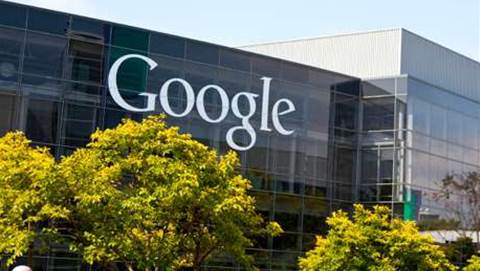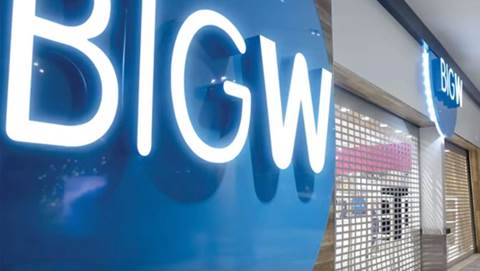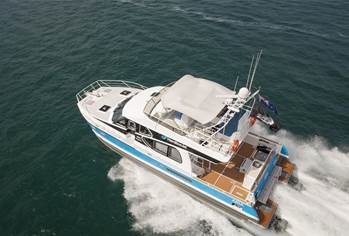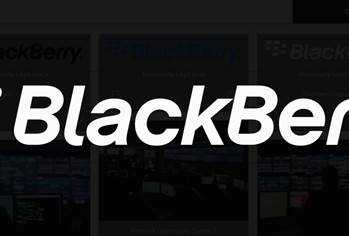
The Federal government estimates the total cost per laptop to be up to $2,500 over four years.
But that amount could be too high to put one in the hands of every student unless the government doubles its financial commitment or alternate proposals are considered, according to Zymaris.
“With the costs the states are putting forward, there’s no way a billion dollars will buy a laptop for every student,” said Zymaris.
“The current approach will mean one netbook between every five or ten kids.”
Cybersource is proposing a variation of a model adopted by French schools , where students are issued with a 2-4 GB USB key that contains a self-booting Linux operating system ‘and all the core applications they need’.
The USB key can be plugged into any computer – personal or shared – and the student’s data can be accessed either directly from the key or the cloud.
Under the Australian variation, students would receive a USB key and either a personal netbook or a laptop that can be shared between two students, depending on the final amount of government funding to be made available.
Cybersource has created a free online kit that state education departments and schools can use to assess and implement its proposal.
“Everyone is proposing a plan with one laptop and one set of systems and data per person,” said Zymaris.
“We’re saying you can shift away from that model in schools. You can still give students something that’s intrinsically theirs [the USB key] – essentially a ‘computer’ without a netbook terminal – and then provide terminals that are interchangeable.
“In the least we’d like to put the idea on the table for consideration,” explained Zymaris.
Comment on the proposal and open source alternatives in general is being sought from both the NSW Department of Education and the Department of Education and Early Childhood Development in Victoria.
Read on to page two to see how Microsoft will make Windows-based netbooks more cost-effective.The Microsoft effect
Much of the total expense of deploying the laptops in schools is built around the cost of Microsoft Windows. It requires more expensive hardware to run it, recurring licensing fees for individual educational applications, and ‘an army of techies’ to fix it if kids start getting into the system control panel settings, according to Zymaris.
It’s a finding that is acknowledged in the Federal government’s National Secondary School Computer Fund financial implications report, but one that Microsoft Australia largely denies.
It wants governments to place less emphasis on cost and more on the complete ‘user experience’ they want to give Australian school students.
“If we start taking the view of what’s the cheapest option it may not give us the best solution,” said Peter Watson, manager of platform strategy at Microsoft Australia.
Watson refused to be drawn on whether the Redmond giant would drop its XP operating system licensing costs or create a new educational software bundle to make it more competitive with open source-based offerings.
But he revealed for the first time that cloud-based applications may be used alongside traditionally licensed software to make Microsoft-based tender proposals more attractive and cost-effective.
“Not everything has to run [locally] on the device,” said Watson.
“We’ll have software that runs on the device but also leverage Live Services and other applications that run in the cloud.”
Microsoft is acutely aware of the importance of having school students learn on its software platforms rather than open source alternatives.
Watson revealed to iTnews just part of the Microsoft stack it wants to put on the laptops. It includes Office, SharePoint for collaboration, unified communications, Live Services including Mesh, Windows Media Player and Movie Maker – highlighting the importance it places on familiarising students with its emerging applications suite.
“Education is such an important customer base,” said Felipe Rego, associate market analyst of PC hardware at IDC Australia.
“If Microsoft don’t have a final presence [in the winning tender], students could grow up using a computer system that isn’t based on Windows.”
Zymaris agreed: “Large vendors have a substantial vested interest in students using their software rather than the alternative.”
But it’s not just the large players who are interested. Zymaris admitted that increased penetration of Linux and applications like OpenOffice in schools as part of this project could potentially unhinge Microsoft’s domination in the enterprise space.
“The more people who use Linux now, the less it becomes their default expectation in the workplace,” said Zymaris.
Rego did acknowledge that the netbook device and the software on it is only part of the picture. The backend architecture is equally important, an area that Microsoft’s Watson is also keen to highlight.
“Microsoft is a very strong player in terms of delivering enterprise-grade infrastructure management,” said Watson.
Rego added: “It’s a total solution that’s going to be the key, and how that’s going to play out in the Microsoft and Linux camps is going to be interesting.
“It’s a tough call to make,” said Rego.
Read on to page three to find out how the USB system works and can be implemented.How the Cybersource USB works
If $2 billion in funding is available, each student is to be provided with a new netbook and a 2-4GB USB key. Less funding would mean providing a netbook to be shared between a pair of students, according to Zymaris.
Students store all their data on the USB key and sync it with a central server. The data can be accessed on any computer, through the school intranet or via an open source learning management system such as Moodle or LAMS.
If anything goes wrong with the operating system or applications, the student's USB key is re-imaged and their data is fetched from the central Intranet server backup. If the student leaves their USB key at home, they can be issued a temporary one for the day.
Zymaris said that re-imaging is a simple five-step process and cuts ongoing maintenance costs because a damaged key can be wiped clean and replaced instantly, without losing any of the student’s data files. It also requires no systems expertise, he said.
"The effort of having designated teaching staff image the USB keys is a trivial, one-click exercise," said Zymaris.
The USB system and application image comes bundled with ‘hundreds’ of free and open source applications for all manner of school and educational requirements and subjects, including maths, science, geography, music theory, multimedia and languages. The full list of software is available via Cybersource.
"It's clear that with the approach we've outlined, it’s feasible to ensure that every single school child in Australia has access to an educational netbook for much of the school week that is filled with hundreds of useful educational software applications,” said Zymaris.
Windows refreshes
On the whole, Zymaris believes that embedding Windows architectures in the education system is an expensive resource vacuum.
He claims that state education departments nationwide are spending a combined $100 million on Windows desktop refreshes every three or four years.
The Victorian Department of Education alone spends in the vicinity of $25 million every refresh cycle on Microsoft Windows desktops. On that basis it is not unreasonable to estimate total refresh spending to be around $100 million. It’s all money that could also be better spent on more netbooks for students, Zymaris claimed.
“There’s no reason we couldn’t have given netbooks to students five years ago,” he explained.
“All the [hardware] technologies in netbooks have been available in abundance for five years.
“The reason we couldn’t go earlier was because you can’t run XP or Vista and get by with a $200 netbook. The cost increase of the hardware needed to run those operating systems reduces the likelihood of putting computer technology in the most number of hands possible,” said Zymaris.
He said Cybersource had lobbied the state education departments for the past decade to adopt open source technologies more broadly, but ‘found it difficult to get the message across that there’s an alternative platform for education’.
“It seems like we have too much [education budget] in Australia to blow,” Zymaris said.
“If we’re throwing around $100 million every refresh cycle I’d be suggesting we have too much money allocated in the space. It has to be more judiciously used,” he added.



_(20).jpg&h=140&w=231&c=1&s=0)

.png&h=140&w=231&c=1&s=0)





 iTnews Executive Retreat - Security Leaders Edition
iTnews Executive Retreat - Security Leaders Edition











_(1).jpg&h=140&w=231&c=1&s=0)



